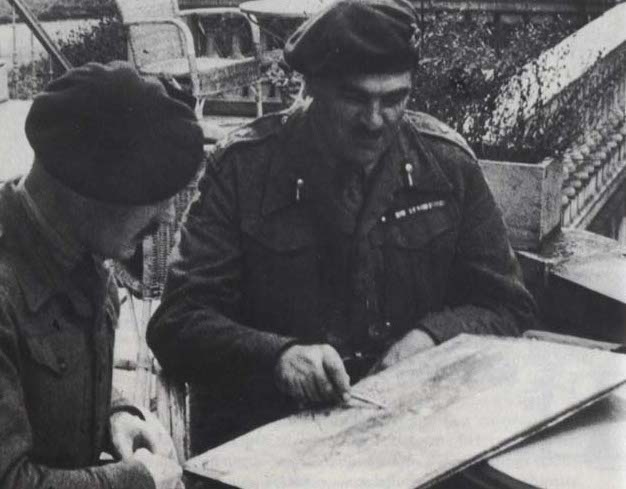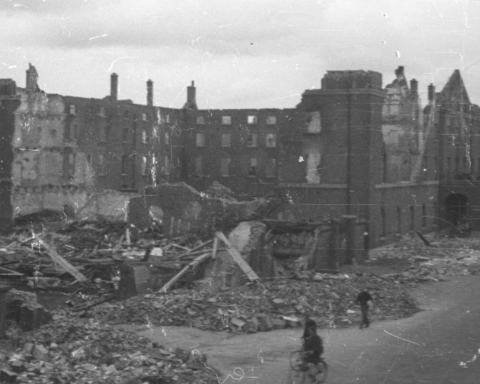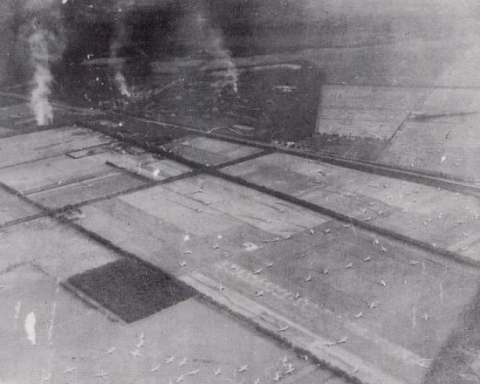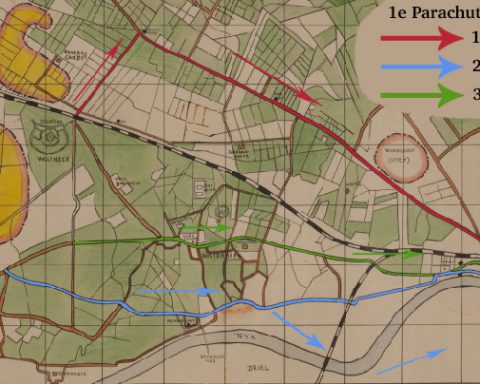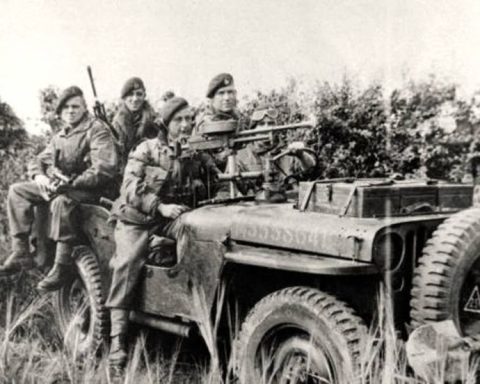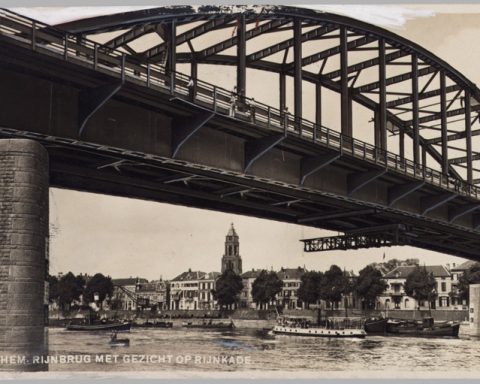While his troops were engaged in fierce battles with the Germans, General Roy Urquhart, the commander of the 1st British Airborne Division, was hiding in an attic at Zwarteweg 14 in the Arnnhem district of Lombok.
In the book that General Urquhart wrote after the war about his experiences during the Battle of Arnhem, he extensively reports on his fateful experiences immediately after the landings.
Frustrated
In the hours after the landings on Sunday, September 17, 1944, Urquhart had set up a temporary headquarters on the edge of the landing zone. There he waited for information from the advancing British troops who were on their way to Arnhem, 12 kilometers away.
Because the British radios were not working and Urquhart did not know how the landings were proceeding, Urquhart decided to look for information on his own in a jeep a few hours after landing. He did not return to his headquarters until 30 hours later.
“The connections failed completely,” Urquhart said. “Here and there we managed to establish contact between components at a short distance, but there was no connection with the outside world.”
Around 4:30 PM on Sunday, September 17, a frustrated Urquhart could no longer contain himself. “It was necessary that I get an idea of progress,” Urquhart justified his decision to leave his headquarters after the war.
Together with a signalman, he jumped into a jeep to look for General Lathbury, who was on his way to Arnhem with the 1st Parachute Brigade. From troops Urquhart met along the way, he heard that General Lathbury was moving with the 3rd Battalion.
In the original plans, the 3rd battalion would advance from the landing zones via the Utrechtseweg to Arnhem. The 2nd battalion, John Frost’s men, were on their way to their main objective: the Rhine Bridge via the Benedendorpseweg and the Onderlangs. The 1st battalion would have to enter Arnhem from the north side via the Amsterdamseweg.
Dead German general
Urquhart found Lathbury at the intersection between the Utrechtseweg and the Wolfhezerweg . It was at this intersection that a few hours earlier the German General Kussin had been shot dead in his staff car by advancing paratroopers.
Lathbury also had problems with the radio communications and did not know how well the advance towards Arnhem was going by his 1st Parachute Brigade.
Urquhart realizes that it would be best to return to his headquarters, but he was advised against this because on his return he would pass sectors that were in the hands of the Germans.
The remains of German General Kussin showed how unwise it was to drive through the front area in a car. Urquhart therefore decided to remain with General Lathbury’s troops.
On the evening of September 17, Lathbury’s troops made very slow progress. Around 8 p.m. in the evening, most troops were still west of Oosterbeek.
As darkness fell, General Lathbury decided to halt. Reconnaissance patrols were sent towards Arnhem to gauge German resistance, and Lathbury and Urquhart moved into a spacious villa west of Oosterbeek to spend the night.
In the early morning of Monday, September 18, Lathbury’s troops moved on. The advance towards Arnhem was slow. At the intersection of Oranjestraat and Utrechtseweg in the Lombok district, fierce fighting broke out between the British paratroopers and the German troops, who were now supported by tanks and mechanical artillery.
Together with General Lathbury, Urquhart suddenly found himself in the middle of the front line.
“My chances of returning to division headquarters seemed to be much lower than I would have liked for the time being,” said Urquhart.
Stuck in the attic
A few minutes later that chance was much smaller. The group of soldiers that Lathbury and Urquhart were part of tried to get out of the front line during the chaotic street fighting in Lombok, but they ran in the wrong direction.
They ran towards the German troops and General Lathbury was hit in the back by a German bullet at the corner of Alexanderstraat and Mauritsstraat.
General Urquhart and two young officers dragged the wounded general into the house at Alexanderstraat 135.
“A surprised middle-aged Dutch couple watched us in silence,” said Urquhart.
Urquhart discussed with the two young officers what to do next. One officer was Captain Jimmy Cleminson. The other was named Taylor; a young intelligence officer from Lathbury’s headquarters.
Just then a German soldier looked through the window into the living room where the British were. Urquhart did not hesitate for a moment and shot the German soldier in the head with his pistol.
General Lathbury urged Urquhart to get away. “Leave me here. You have to move on. Otherwise you will be cut off.”
Through the back door, Urquhart and the two British officers entered a back alley. A little further on they ended up through the back door in Anton Derksen’s house, at Zwarteweg 14.
The Dutchman made it clear in Dutch that there were Germans everywhere. The British hid in the attic.
Urquhart: “At that moment we still expected the Germans to storm in at any moment. But everything remained quiet.”

However, getting away from the house seemed impossible. Right in front of the house stood a German mechanized cannon, with a group of German soldiers surrounding it. Urquhart had to accept that at that moment he was nothing more than a spectator.
Urquhart wrote about this in his book:
“The fact that I could no longer influence the course of the battle was torture for me. The hours that day and that night crept by painfully slowly. If I had known then how bad a situation we were in, I would have made an effort to reach my headquarters no matter what. However, it is doubtful whether I would have succeeded.”
In the early morning of Tuesday, September 19, the British attack on the bridge that Urquhart had already expected finally came. While the sound of fighting suddenly sounded from outside, Antonn Derksen informed the British that there were English soldiers on the corner of the street.
“We ran down the street and I thanked God we were in touch again,” Urquhart said.
The British commander immediately chartered a jeep and raced to Hotel Hartenstein, which now housed the headquarters of the 1st British Airborne Division.
Thirty hours after his departure, General Urquhart returned to command of his airborne division.


